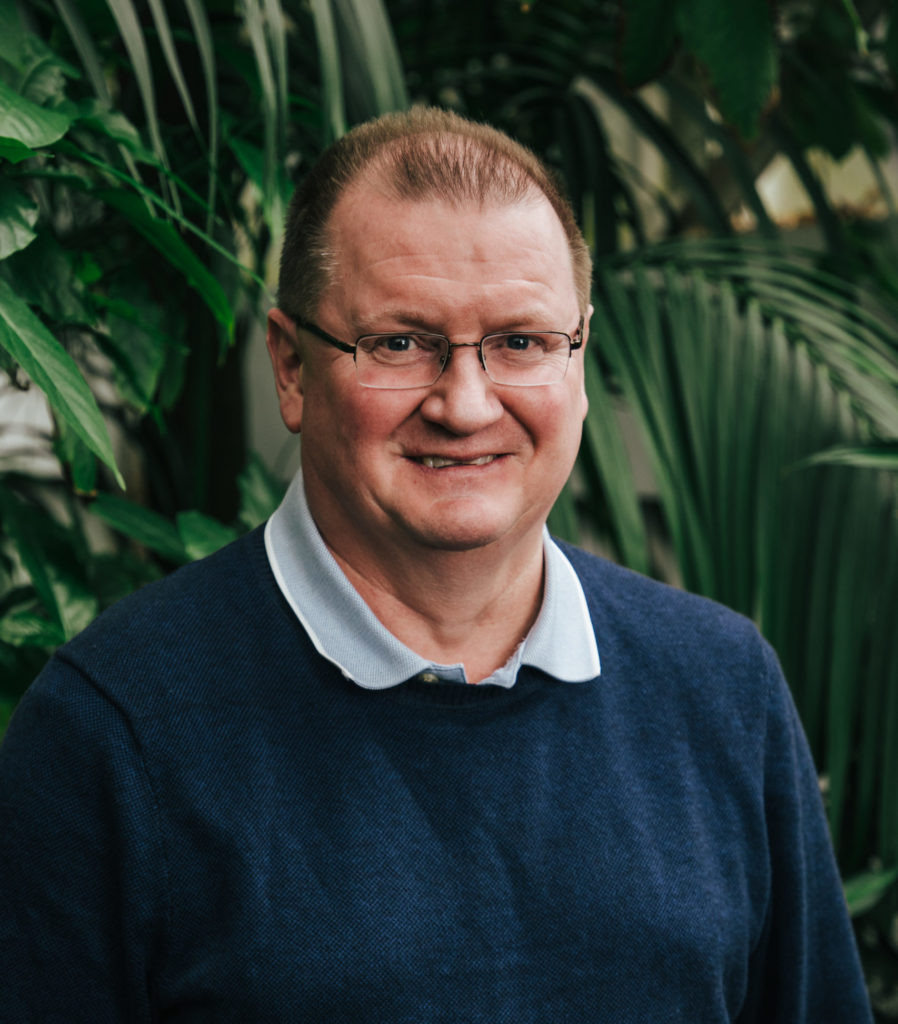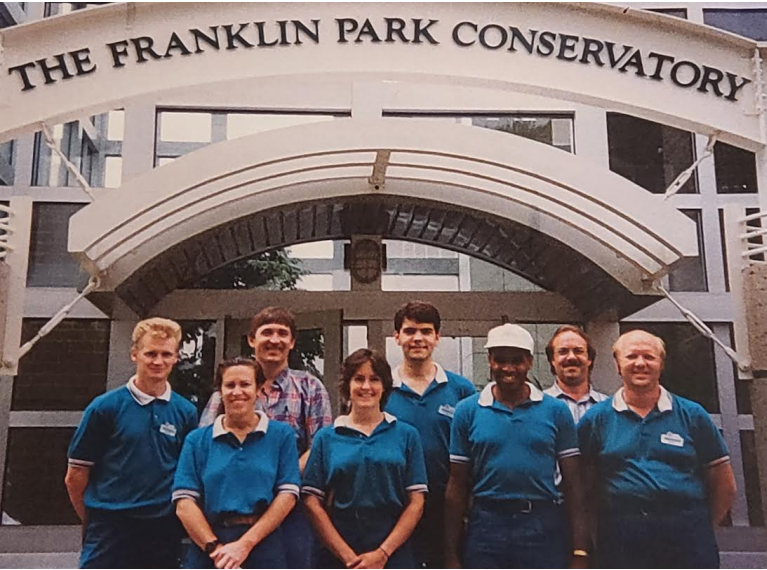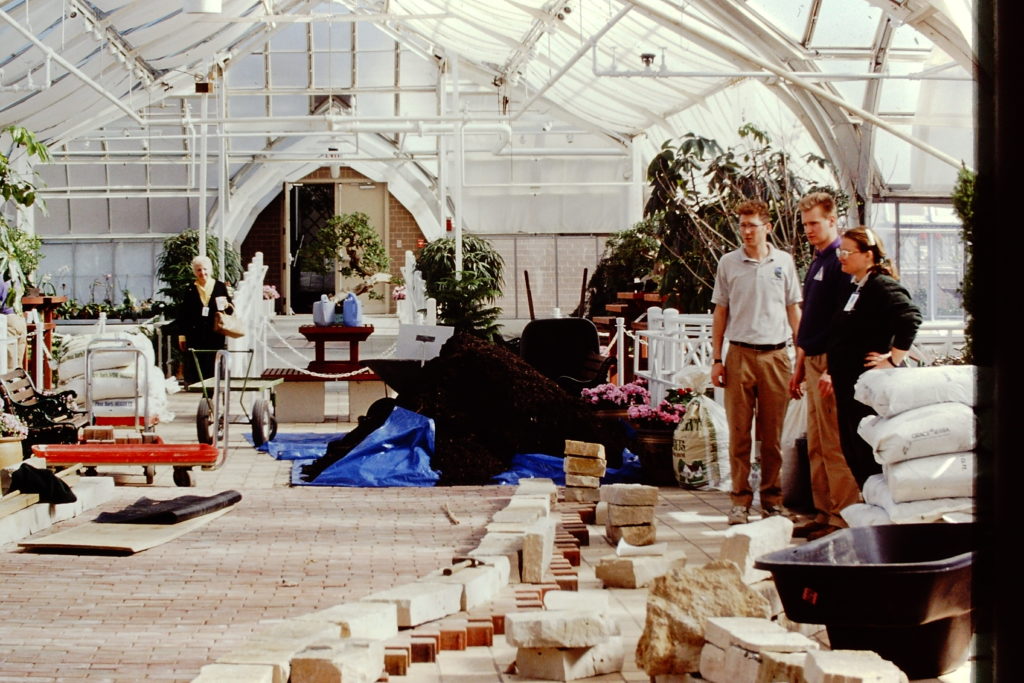Published February 22, 2023
- Home
- Conservatory Cultivators
- The Little Garden That Could
Published February 22, 2023
2023 marks the Conservatory’s 30th anniversary, and one staff member has been here since the beginning: Garry Clarke, Vice President of Planning. We caught up with Clarke to hear about his first unglamorous job in the John F. Wolfe Palm House, how he has seen the Conservatory’s spaces transform over three decades with community support and how he hopes the Conservatory will evolve for the next 30.

Garry Clarke, the Conservatory’s Vice President of Planning
Although the historic John F. Wolfe Palm House was built in 1895, it was owned and maintained by Columbus Recreation and Parks until the 1990s. In 1991, Clarke joined the team to help prepare the Conservatory to host a huge international horticultural exposition, AmeriFlora ‘92. Clarke, a Brit whose family hails from Worcestershire, England, came to support AmeriFlora ‘92 as part of the The Ohio Program internship program through the College of Food, Agricultural, and Environmental Sciences at OSU.
“My first job was to go into the Palm House with a hose and water down all the construction dust [while it underwent renovation].” The spigot was outside, so Clarke had to drag a hose through the high windows. “Day after day, that’s what I would do.”
“Ameriflora attracted 2 million visitors, it put Columbus on the map,” said Clarke. “It expanded and upgraded the Conservatory including the Grand Atrium, north and south biomes and added lakes and cascades in Franklin Park.” But after Ameriflora closed, the situation entered a holding pattern. “At the end, there was no money,” said Clarke. “They were figuring out what was next and trying to appoint the new board. They told me we could keep 4 people to maintain plants and the Conservatory, so that’s what we did.”

Clarke—on the far left—around the beginning of his career at the Conservatory
For a few months, Clarke and the remaining team were unsure of what would happen. But they were finally able to reopen to the public, now operating as an independent nonprofit. “The day we reopened was special,” Clarke recalled. “It was free that day and we had lines around the building all the way to Broad Street.”
After a day of celebration, tickets went on sale at the reasonable price of $3. But margins were still tight and staffing was lean. “We had started keeping the coins from the koi ponds” that visitors would drop in to make a wish. “For a while we had buckets and buckets of coins. We bought our first computer with change. It was an Intel 486, that’s what they were called back then. We pretty much used all of those coins.”
Gradually, visitorship increased, and the addition of the annual butterflies show was a welcome shift in 1994. “That was a game changer, we started to get more admissions,” said Clarke. “From what I’ve heard now, we used all our funds to make it happen.”
The gamble paid off, and the Conservatory continued to stabilize and grow. “We’ve had a lot of ups and downs. But someone called us the little garden that could,” said Clarke. Clarke even worked with his wife at the Conservatory when she worked as a horticulturist, going on to have his wedding reception in the Palm House years later. Clarke has seen the organization go through huge physical changes and renovations during his time. The first Dale Chihuly exhibition in 2003, Bruce A. Harkey joining as President & CEO in 2007, Palm House additions including building the rooftop Zen and Grove terraces, and the night in 2008 when the James Turrell light installation, Light Raiment II, was first turned on to illuminate the Palm House.

Clarke and Conservatory President & CEO, Bruce A. Harkey during the opening of Light Raiment II
Two of the biggest projects that Clarke has contributed to were the addition of the Scotts Miracle-Gro Company Community Garden Campus in 2009 and the Scotts Miracle-Gro Foundation Children’s Garden in 2018. Clarke had a background in horticulture, not construction or project management, so everything he now knows about building projects, he’s learned on the job. “The Community Garden Campus was eye opening for me. It was the first time I realized how something could go from a drawing on a piece of paper to something real.” Clarke believes that the Children’s Garden has been the single most transformative change for the Conservatory to date. “It did what the designers said it would do.” The garden now welcomes upwards of 70,000 children annually to a hands-on playspace built just for them. “But that was five years ago, believe it or not.”

Clarke overseeing renovations in the Dorothy M. Davis Showhouse
“Now we’ve come full circle,” he said, looking ahead to the projects we’ll undertake as part of our next phase of development. “The future is what excites me,” said Clarke. In 2022, the Conservatory was granted $1 million in funding to begin planning a renovation of the historic Palm House, which will be the largest capital project in Conservatory history. Thanks to the support of thousands of donors and supporters like you over the past 30 years, the Conservatory is poised to continue to grow, evolve and be a beloved place of connection in the community for years to come. A refresh of the organization’s guiding Master Plan is currently in the works in collaboration with Conservatory leadership, stakeholders, community members, staff, board and of course, Garry.
“There’s more to do than we’ve done,” he said with a smile. “Bruce (the Conservatory’s CEO) often talks to me about legacy. You want to leave this organization in a stronger place than when you started.” With Clarke’s support, the Conservatory is ready to do just that.
Choose how you would like to give